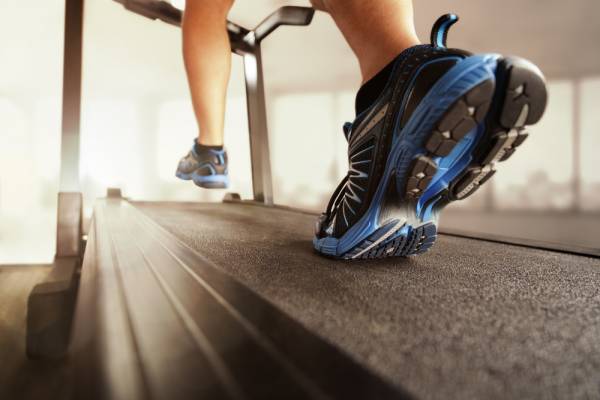As an athlete, chances are you have experienced knee pain. If you are a runner, the chances of experiencing knee pain are higher due to several repetitive factors: the wear and tear on the knee joint, the impact on the knee (body weight plus force of impact on the ground), and the movement pattern of the knee. In addition, running also recruits, engages, and stresses the cartilage, muscles, tendons, and ligaments that help the knee (and body) function properly while running.
What Is Patellofemoral Pain Syndrome?
While running injuries run the gamut from foot to shin to hips (and then some), this article will address one of the more common knee injuries – anterior knee pain – also known as patellofemoral pain syndrome (PFS) or runner’s knee, which may also be called IT band syndrome.
In basic terms, our knee is meant to track up and down. When the knee is not tracking properly, our knee is mal-tracking, or out of alignment. Anterior knee pain usually occurs when the knee slides to the outside of the knee, when the knee is bent. This misalignment causes friction of the articular cartilage that lines the back of the kneecap, which is now rubbing against the underlying bone. As this continues to occur (from the repetitive motion of running), damage to the articular cartilage increases, as does the pain.
Women Are at Higher Risk of PFS
Interestingly enough, female runners are at a greater risk for mal-tracking of the knee joint. While the condition may affect anyone, usually due to improper biomechanics or muscle imbalances, female runners experience this injury more often than male runners.
Because females have wider hips, the angle of their femur (thigh bone) from the knee to the hip is greater than the angle of a male’s femur. This wider angle directly impacts the female at the knee, creating an increased risk of mal-tracking. There are other risk factors that may impact anterior knee pain, whether female or male: weak hip abductor muscles (weak gluteus medius), over pronation of the feet, and quad muscle imbalances.

Is Your Pain PFS?
Anterior, meaning front, knee pain complaints begin at the front of the knee. Because the knee is a joint, it moves around, so actually pinpointing the pain may be difficult. So, how do you know if you are experiencing anterior knee pain, as opposed to the normal aches and pains you feel after a long or hard run? Anterior knee pain usually flares up at the end of a run, and may even feel worse the next day or when standing up after sitting. You may also experience anterior knee pain when walking down stairs.
How to Prevent or Treat Your PFS
After confirming anterior knee pain with a medical professional, treatment of anterior knee pain will focus on correcting the cause of the injury. If anterior knee pain is caught early enough, effective short-term treatment may include the old RICE method – rest, ice, compression, elevation, and anti-inflammatories, followed by corrective action.
For many of us, prevention of anterior knee pain can be as easy as having a properly fitted running shoe, strong muscles, and good flexibility. If you are not sure how to find the proper running shoe, it is highly recommended that you make an appointment for a professional shoe fitting, as well as make an appointment for a professional gait analysis. Most running stores have professional shoe fittings and the ability to analyze your gait. If this is unavailable to you, there are many other resources to use, including biomechanics trainers, physical therapists, athletic trainers, personal trainers, and sports medicine professionals.

One of the many ways to determine a muscle imbalance is to look at your squat. If your knees turn inward, you may have weak hip abductor muscles (gluteus medius). Muscle strengthening exercises may help correct this. Again, any of the aforementioned professionals can aid you in correcting muscle imbalances.
As always, flexibility is key to preventing injuries of many kinds. With anterior knee pain, it is imperative to make sure your quads, glutes, and IT band, in particular, are flexible. A good stretch, warm up, and cool down are essential elements to flexibility. Stretches and myofascial release using a foam roller are ideal for increasing flexibility. Sports massage will also be beneficial in stretching and working out muscles.
This article is not meant to diagnose knee pain, but rather to inform runners of a common knee injury, and most importantly, how to prevent it. As with all injuries, please seek the help of a medical professional for a correct diagnosis.
Photos courtesy of Shutterstock.






